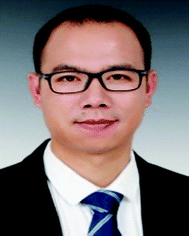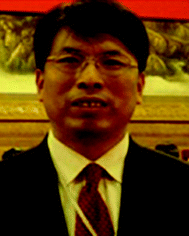Materials chemistry research at Nankai University – a themed collection dedicated to the 100th anniversary of Nankai University
Jialiang
Xu
 a and
Xian-He
Bu
a and
Xian-He
Bu
 *ab
*ab
aSchool of Materials Science and Engineering, National Institute for Advanced Materials, Tianjin Key Laboratory of Metal and Molecule-Based Material Chemistry, Nankai University, Tianjin 300350, China. E-mail: buxh@nankai.edu.cn
bState Key Laboratory of Elemento-Organic Chemistry, College of Chemistry, Nankai University, Tianjin 300071, China
This themed collection highlights the interdisciplinary research in the field of Materials Chemistry at Nankai University to celebrate its 100th anniversary. Nankai University is one of the most historical and prestigious universities in China. It is a key comprehensive and research-oriented university with the widest range of disciplines, featuring a balance between the humanities and the sciences. It is particularly appreciated that Nankai has made substantial contributions to the development of modern Chemistry in China. In the past decades, Nankai University has made a significant contribution to Materials Chemistry. The continuous endeavor in Materials Chemistry of Nankai University has contributed significantly to the high ESI ranking of Chemistry and Materials Science of the university (both listed as the “First Class Disciplines” program of China). This themed collection, including 3 reviews and 13 original research articles, covers both traditional and emergent topics, and is intended to push the exciting marriage between Chemistry and Materials Science within Nankai and beyond.
For energy storage materials, Zhiqiang Niu et al. discussed carbon-based materials as electrodes for lithium-ion capacitors. Jiajie Liang et al. reported a general and scalable screen-printing approach to the one-step construction of high-performance micro-supercapacitors. Weichao Wang and Wei-Hua Wang et al. have explored the microscopic mechanism of pseudocapacitance with electronic structures in monolayer 1T-MoS2 electrodes for supercapacitors. Xian-He Bu and Ze Chang et al. shed light on the construction of metal oxide anode materials for lithium-ion batteries with the metal–organic framework templates/precursors. Yaping Du et al. developed a sandwich-type sulfur cathode for lithium–sulfur batteries with improved performance.
In the area of catalytic materials, Mingjian Yuan et al. have developed an electrocatalyst for the hydrogen evolution reaction based on graphdiyne/CuS heterostructures. Tong-Liang Hu et al. have developed a hybrid catalyst via mild pyrolysis of a bimetal-MOF for the selective oxidation of benzyl alcohol.
For optoelectronic materials, Rujun Ma et al. reviewed applications of intrinsically stretchable conductors and interconnects in soft electronics. Wei Li and Xian-He Bu et al. studied the fundamental electronic structures and elastic properties of metal-free perovskite materials. Wentao Xu et al. attempted to employ mixed-halide perovskites for ultrasensitive two-terminal artificial synaptic devices.
As for optically active materials, Shuqi Chen et al. reviewed the principle, design and applications of structural colors in metasurfaces. Jialiang Xu et al. utilized an extreme high-pressure technique to modulate the light emitting behaviors of organic molecular crystals.
Molecular and supramolecular syntheses are the basis for the construction of functional materials. Dongbing Zhao et al. developed a facile Pd-catalytic approach to some important building blocks for modular assembly. Dan Ding et al. employed an AIEgen to construct a fluorescence and photoactivity dual-activatable prodrug with magnified anticancer effects. Linqi Shi, Yang Liu, and co-workers have developed another drug delivery systems for cancer therapy that is dual responsive to pH-reduction. Yongsheng Liu et al. synthesized two ultranarrow bandgap non-fullerene acceptors for organic solar cells with very low energy loss.
We would like to express our deep appreciation to Prof. Ben Zhong Tang, the Editor-in-chief of Materials Chemistry Frontiers, to give us the opportunity to organize this themed collection. We would also like to thank Dr Zoey Yu (the Deputy Editor) and Dr Wenjun Liu (the Executive Editor), as well as all the staff at Materials Chemistry Frontiers for their professional efforts dedicated to this themed collection.
| This journal is © the Partner Organisations 2019 |


